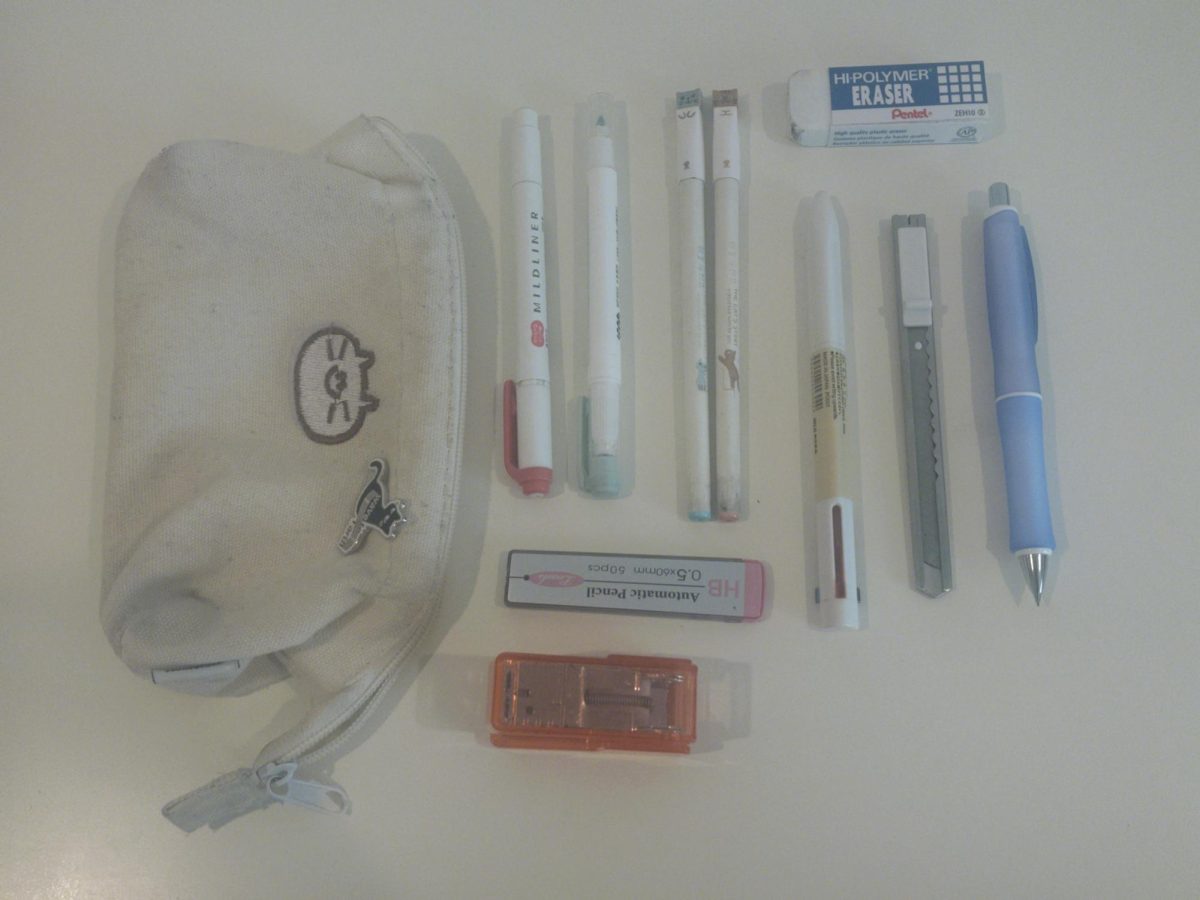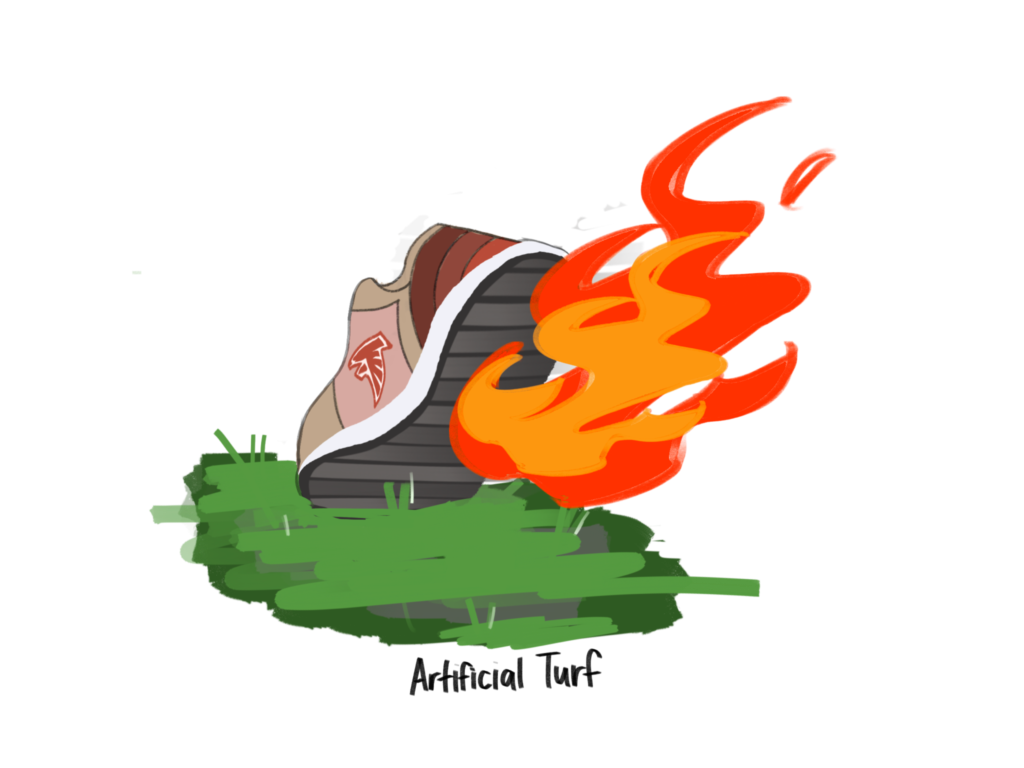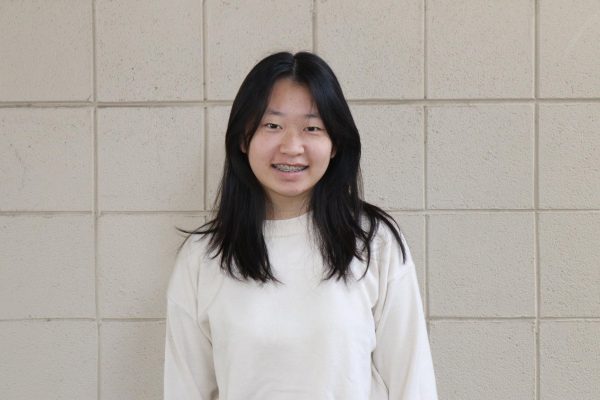During a minor fire incident on Aug. 23, students were evacuated onto one of the school’s two turf fields. As murmurs spread during the evacuation, the lower field was so hot that some students were moved from the field and rested on the track instead.
When the school was founded in 1959, all three of its fields were made of real grass. In 2004, however, the school replaced the football field with artificial turf. In 2015, the upper field and softball fields were also replaced with artificial turf even though — according to a Falcon article — many members of the softball team said they wished the field hadn’t been turfed, claiming that it is more dangerous to play on turf.
Now not a blade of grass exists as a playing surface for the school’s sports. As the lifespan of the artificial turf on both the upperfield and softball fields are drawing near their ends, it’s time to ask serious questions about the continued costs and safety of these fields. Maybe it’s time to consider going back to real grass.
Dangers of turf: heat and surprising water consumption
While artificial turf supposedly has a lower cost of maintenance and conserves water (important in California’s drought-prone climate), these claims are misleading.
Proponents of artificial turf often cite its ability to stay green without having to be frequently watered. Yet there are many cases where artificial turf also needs to be watered as often as — if not more so than — real drought-tolerant grass.
In addition, the National Recreation and Park Association points out artificial turf may need to be heavily watered before games in order to maintain the blades and lower the surface temperature for a short period of time. It also needs to be replaced every 8-10 years, costing as much as $12.33 per square foot each time. These costs can easily run into the hundreds of thousands of dollars.
Meanwhile, the living properties of real grass allow it to be continuously used for limitless years if maintained well. A study by Cornell shows that, over the long run, approximately 2 acres of real grass costs $50,000-$600,000 to install and $4,000 and 250 hours of labor a year to maintain and approximately two acres artificial turf costs $600,000–$1 million to install and $5,000–$22,000 and 375 hours of labor a year to maintain.
After they also tested the heat-retaining properties of real grass versus artificial turf, the SAO/NASA Astrophysics Data System (a collaboration between NASA and the Center for Astrophysics by Harvard and Smithsonian) found results that prove this point. While the real grass was measured to be around 35.3 degrees Celsius, the neighboring artificial turf was measured to be around 62.5 degrees Celsius.
More importantly, they found that to counteract these high temperatures, irrigation of the turf fields is needed, which leads to high water demands that counteract the purpose of switching to artificial turf to save water. There is a reason why even Santa Clara Valley Water District, a state of California Special District, does not support switching to artificial turf to conserve water.
The SAO/NASA Astrophysics Data System research also found that when artificial turf is not watered regularly, it contributes to the urban heat island effect — where urbanized areas that experience higher temperatures than outlying areas. In some cases, playing on synthetic turf can even melt shoes, blister hands and feet and induce dehydration and heatstroke. According to the University of Plymouth, artificial grass can also contribute to global warming by absorbing significantly more radiation than living grass and by displacing living plants that could remove carbon dioxide through photosynthesis.
Not only is this aspect of artificial turf terrible for the environment, but paired with the increased risk of floods from because it lacks dirt’s water-absorbing properties and because it can’t either host or support natural wildlife, artificial turf does not bode a positive future for the Earth.
Turf pollutes waterways and atmosphere
In addition to its pricey and water-reliant nature, artificial turf can pollute waterways and spread non-biodegradable plastics. Turf itself is usually made of plastic with rubber crumb spread beneath it to keep the plastic blades standing up. These rubber crumbs are also easily transported off the field, furthering its harmful impact.
Both the rubber crumbs and plastic blades eventually break down into microplastics which contain toxic perfluoroalkyl and polyfluoroalkyl substances (PFAS) that will never break down within our lifetimes. These PFAs are also extremely harmful to the human body — inhaling or coming into contact with it poses a fume hazard.
Perhaps worst of all, institutions may have no actual way of recycling the turf. Instead, some reports suggest it is sometimes apparently sold to third-party resellers, who in turn sell them to unknowing property owners.
Artificial turf is conducive to injuries
Turf is also worse on athletes’ bodies. According to the NFL Players Association, there is less give on synthetic surfaces, meaning feet, ankles and knees absorb the force, which makes severe injury more likely to follow. Last June, the school’s turf failed the GMAX test — which shows the ability of the playing surface to absorb the “shock,” or kinetic energy from a collision. Meanwhile, real grass and dirt naturally and effectively absorbs the impact of players landing on it.
For example, junior Anika Kapasi, a Falcon newspaper staff member who also plays on the school’s soccer team, suffered three separate concussions while playing soccer on turf. She especially emphasized the fact that the degree and frequency of her concussions were exacerbated as a result of the artificial turf field’s failure to aid in impact absorption like real grass can. There is a reason that most — if not all — NFL players prefer playing on grass.
School’s difficulty with changing artificial turf
According to superintendent Bill Sanderson, the district and board decided on keeping the artificial turf fields as switching to natural grass would decommission the football field from use by the school band and renters for at least two years due to the layers and drainage system below the field. In addition, the board shared concern with how quickly natural grass would be ruined with this extremely high level of use and shared concern with a possible need for pesticides to maintain it.
We commend the district for trying new available technologies to save time and money to spend in other areas of the school, but we believe that we have had enough time to judge the value of artificial turf. But the negative aspects of turf are already glaringly clear. When turf fields on campus need to be replaced, it’s time the board strongly considers bringing back real grass.




























